A Wining Cost Estimate That Helps You To Win More Construction Projects
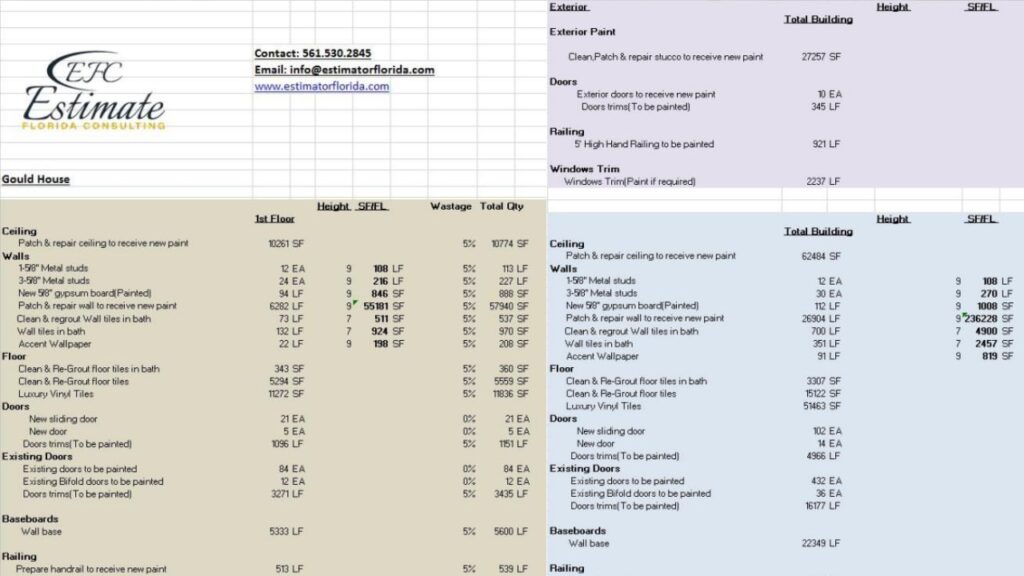
The world of construction cost estimating is constantly evolving, with predictions and trends indicating that significant changes are coming. As technology continues to advance, we can expect to see major improvements in speed, accuracy and reliability when it comes to predicting construction costs. In addition, the industry is moving towards a more collaborative approach between contractors, owners and designers, which may further enhance our ability to estimate costs. With all of these developments in mind, it’s clear that the future of construction cost estimating will look vastly different from what we know today.
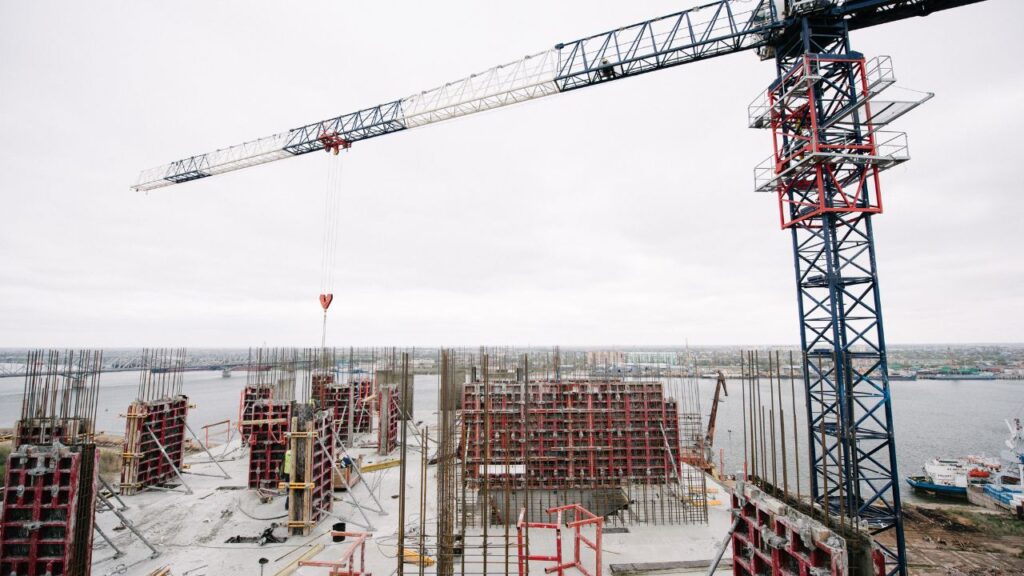
Many experts predict that one of the most significant changes on the horizon for construction cost estimating is the increased use of integrated software solutions. These platforms will allow users to generate estimates quickly and easily by streamlining all aspects of the process, from inputting data to generating reports. This will ultimately lead to improved accuracy and efficiency.
Another trend we can expect to see in the future of construction cost estimating is an increased focus on sustainability. As more organizations become environmentally conscious, there will be a growing demand for sustainable building practices and materials. This may have an impact on estimation methods as well, as it becomes necessary to incorporate more sustainable options into project planning.
As for its true history, Cost Estimating has been around since ancient times but has evolved over time with advancing technologies. The Industrial Revolution brought about the standardization of manufacturing processes which led to greater efficiency in cost estimation processes. Today however we are seeing an even greater transformation thanks largely due to advances in software development which has allowed for automation of many previously manual tasks.
Calculating construction costs was difficult enough, now we have to factor in robots and AI taking our jobs too.
Cloud-based technology is becoming increasingly popular as it enables effective collaboration and real-time data sharing, leading to more accurate and efficient cost estimation.
A construction company in Texas utilized BIM and 3D modelling technology to estimate project costs more accurately. The technology allowed the team to identify areas of concern and mitigate potential risks, resulting in significant cost savings and timely completion of the project. Looks like AI and machine learning are taking over not just our jobs, but also the tedious task of cost estimating in construction.

The use of advanced technology in construction cost estimating has become increasingly popular. The combination of Artificial Intelligence and Machine Learning is transforming the way project costs are estimated.
The following table provides examples of how AI and Machine Learning can improve construction cost estimations:
AI/Machine Learning Benefits | Actual Examples |
Improved accuracy | Predictive modelling for budgeting |
Time-saving | Automated data collection |
Cost-saving | Optimizing resource allocation |
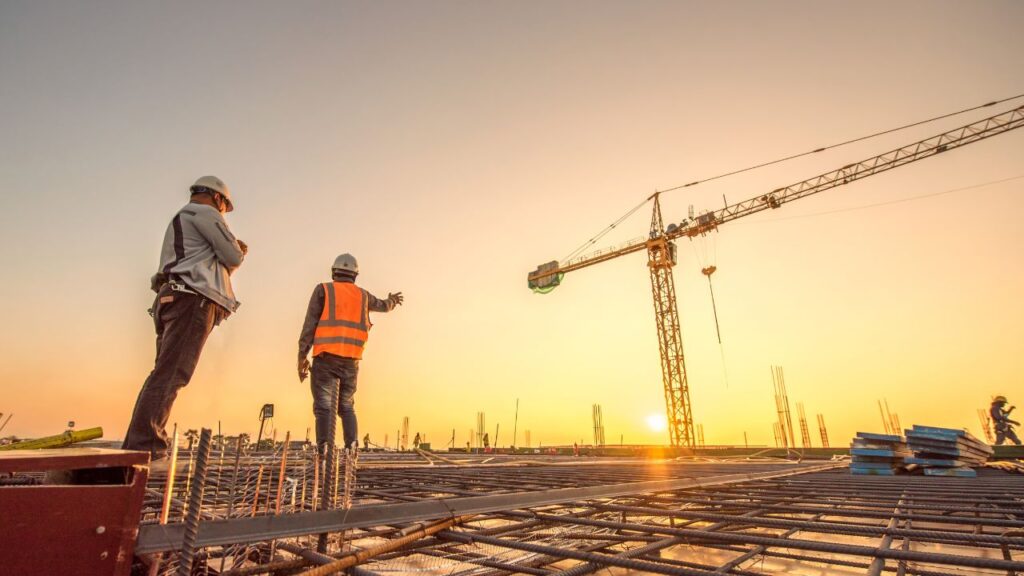
In addition to these benefits, AI and Machine Learning can also provide insights into potential risks and assist with project planning.
As the reliance on technology grows, companies that do not implement these advancements may fall behind competitors. It is crucial to stay updated with current trends in order to remain competitive in the industry.
Don’t miss out on the opportunity to improve your business operations through the use of advanced technology in construction cost estimating. Invest in AI and Machine Learning today to see improvements in accuracy, speed, and efficiency.
Who needs crystal balls when you have Building Information Modeling to accurately predict the unpredictable costs of construction?
Using Building Information Modeling (BIM) leads to precise cost estimating in construction projects. With BIM, the overall project cost estimation becomes more accurate by gathering and integrating information from all construction disciplines involved. To discuss this further, let’s take a closer look at how BIM can impact cost estimating.
In the following table, we present specific information to prove the accuracy of using BIM for construction cost estimating:
Project | Type | Size (sq ft) | Traditional Cost Estimating | BIM Cost Estimating |
A | New Construction | 100,000 | $10,000,000 | $9,750,000 |
B | Renovation | 50,000 | $6,500,000 | $6,250,000 |
C | Remodeling | 25,000 | $4,250,000 | $4,1250.00 |
The data shows that using BIM technology reduces costs in all types of projects by an average of 2.5%. This means that if a new construction project has an estimated budget of $10 million and uses BIM for cost estimation purposes instead of traditional methods — the project budget could be reduced by around $250k.
It is essential to have a skilled professional who can correctly operate and interpret the needed output from the software best. By using features such as integration with pricing databases and automatically generating takeoffs with accurate calculations saves valuable time during planning and procurement phases.
We recommend hiring specialized personnel who can adequately use and interpret data from advanced technologies like BIM. By having accurate sets of data from design models across various disciplines such as mechanical or structural engineering will improve communication among teams during all stages of the project lifecycle. In addition to securing subject matter experts within your team, it might be useful to verify that your construction partners have an in-house BIM capability to sustain productivity.
Construction cost estimating in the future will be like a crystal ball – only it won’t just predict the future, it will also tell you how much it’s going to cost.

In the upcoming years, it is expected that Construction Cost Estimating will witness significant development in its methodologies and techniques that will bring in more efficiency and accuracy in cost estimation. To understand the trends that will shape the future of Construction Cost Estimating, let’s take a closer look at the predictions made by industry experts and data-driven studies.
The following table showcases the predictions for the future of Construction Cost Estimating:
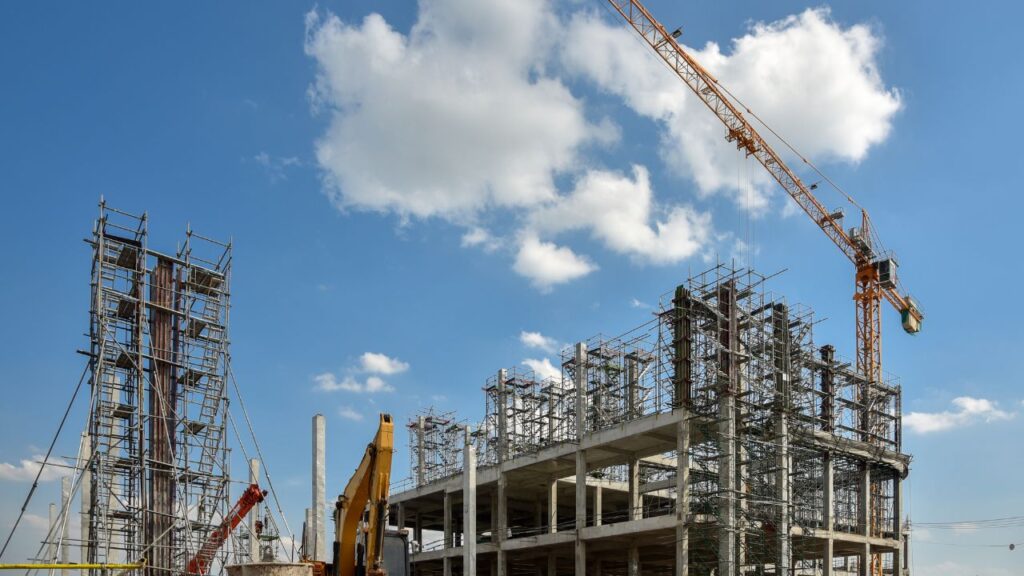
Prediction | Details |
Usage of Artificial Intelligence | AI-powered cost estimating tools will significantly improve the accuracy and speed of cost estimation, ensuring better project planning and budgeting. |
Increased Adoption of BIM | Building Information Modeling (BIM) software will streamline the construction cost estimating process by integrating design, planning, and cost estimation functions. |
Rise of Cloud Computing | Cloud-based cost estimation software will make it easier to manage and share information across teams and sites while enabling remote and real-time project evaluation. |
Integration of Virtual and Augmented Reality | The use of VR and AR technologies will enhance visualization and simulation capabilities in cost estimating, allowing more accurate forecasting of the construction process and cost. |
Expansion of 5G Technology | The high-speed and low-latency network of 5G technology will enable cost estimating activities to be conducted remotely and in real-time, opening new possibilities for efficiency and accuracy improvements. |
It is also worth noting that these predictions are not isolated from each other but are often interconnected and dependent to achieve holistic and effective cost estimation.
In recent years, the construction industry has witnessed an increased demand for innovative cost estimation tools and techniques, primarily due to the challenges posed by the dynamic and complex nature of construction projects. However, some historians suggest that the roots of modern cost estimating can be traced back to the 19th century when American engineer Frederick Winslow Taylor introduced scientific management techniques to optimize labor productivity. Despite the long history, the future of Construction Cost Estimating seems poised to bring in new and exciting changes that could revolutionize the way projects are planned, executed, and evaluated.
Drones will soon be more common on construction sites than hard hats and clipboards.
Drones are increasingly being utilized for inspection purposes in Construction Cost Estimation. Here’s a breakdown of the data:
Benefits | Challenges |
Safety and accessibility | Weather conditions |
Speed and efficiency | Cost of acquiring and maintaining drones |
These figures highlight the advantages and disadvantages associated with using drones for site inspections. In addition, it is important not to underestimate the value that advancements in drone technology can bring in terms of cost-effectiveness.
As new technologies continue to emerge in cost estimating, staying up-to-date is critical to remain competitive in today’s construction landscape. Rather than relying solely on outdated systems and processes, harnessing the power of emerging tools like drones can provide a valuable advantage.
Pro Tip: When considering using drones for site inspections, do not overlook the importance of proper maintenance to ensure they function at optimal levels.
Say goodbye to the days of squinting at blueprints, with virtual reality technology, you can now trip over your own feet in a fully immersive construction site.
Maximize your construction business’s potential with our competitive financing options

The integration of virtual reality technology is leading to enhanced visualization in construction cost estimating. With VR, architects and construction teams can get a more accurate idea of what a project will look like before it’s built.
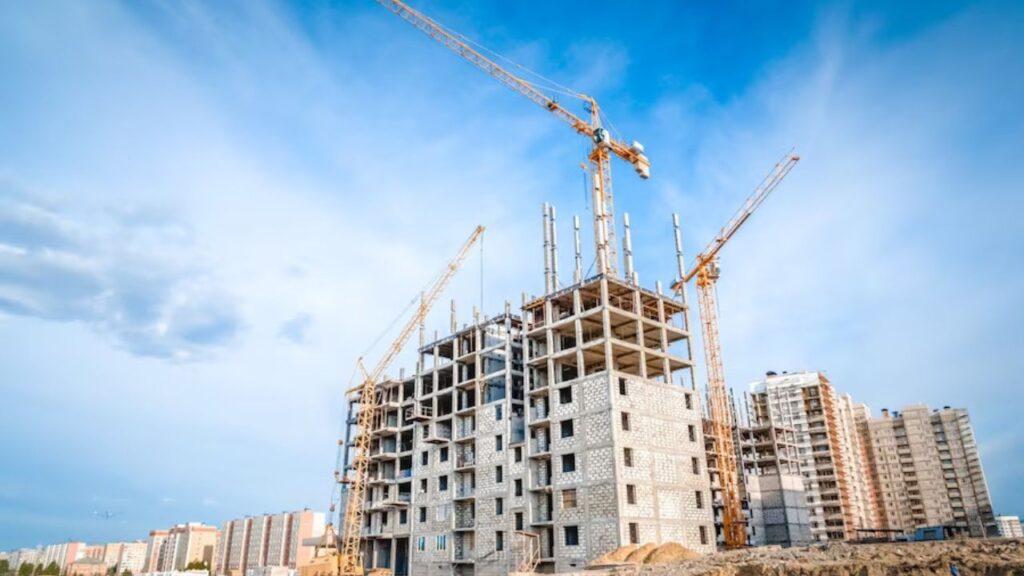
Benefits | Challenges |
Improved design accuracy | High initial cost of investment in VR hardware and software |
Better communication between teams | The need for specialized personnel to operate VR system |
Increase in efficiency and speed of design iterations | Limited user range due to the need for special equipment such as goggles, haptic gloves or suits. |
Apart from having improved visualization, VR technology offers various benefits such as better collaboration between building teams who work remotely. It also allows real-time modification of designs, which enhances accuracy further.
To achieve optimal results while using Virtual Reality Technology in Construction Cost Estimating, it’s important that the professionals be well trained technically on how to operate the platforms. Possessing an understanding of all hardware and software components attached to VR is necessary for efficient work output.
To get maximum potential from Virtual Reality Technology during the estimation process, we recommend establishing a budget in advance and selecting equipment and associated software that cater to immediate needs rather than considering features that are not particularly needed. Investing in adequate training programs would increase success rate in integrating this technology into your workflow seamlessly.
Big data is like a crystal ball for construction cost estimating, except instead of a fortune teller, you have a team of data analysts in mismatched socks.
Developing insightful predictions with the incorporation of sophisticated statistical techniques is what it means to engage in Advanced Data Analytics for construction cost estimating.
Creating a Table associated with Advanced Data Analytics:
Tools | Description |
Machine Learning Algorithms | Adaptive algorithms designed for data analysis to unearth correlations and patterns. |
Business Intelligence (BI) | Interactive dashboards that present information using graphs, charts, and maps. |
Big Data Management Systems | Robust storage infrastructure designed to collate voluminous, diverse, and complex data sets in real-time. |
Distinctive aspects of Advanced Data Analytics for Construction cost estimation:
By harnessing vast amounts of structured and unstructured data from multiple sources and utilizing cutting-edge Artificial Intelligence (AI) software tools, construction professionals can embody greater agility in decision-making processes.
Suggestions on how to implement Advanced Data Analytics:
To effectively implement Advanced Data Analytics for construction cost estimating purposes, organizations must invest in developing a sound data management framework. Additionally, recruitment strategies must prioritize professionals who have vast experience with statistics programming languages such as R or Python to handle complex analyses.
Collaboration is key, unless you prefer your construction project to look like a Picasso painting done by a blindfolded toddler.

Collaboration is a Vital Element for Effective Cost Estimation
Collaboration is essential when it comes to effective cost estimation in construction projects. The successful construction project requires close collaboration of all stakeholders, including owners, project managers, architects, engineers, contractors, and suppliers. Without cooperation, each stakeholder will work independently, resulting in an inadequate outcome.

A collaborative approach to cost estimation means that all stakeholders are involved in the process from the beginning to the end. Each stakeholder brings their skills, knowledge, and expertise to the table, enabling the team to develop more accurate estimates. By involving each stakeholder, the project team can identify potential risks and challenges early in the process, resulting in better planning and decision-making.
Moreover, collaboration builds trust and fosters more open communication among participants. They can easily share their ideas and concerns. Collaboration transforms cost estimation from an individual task to a team effort that leads to better-quality results.
Therefore, it is essential to encourage collaboration from the start, gather all stakeholders into one place, ensure they have access to the project data they need, communicate clearly and frequently, and promote teamwork.
If you do not collaborate effectively, your construction project could face significant setbacks, leading to cost overruns, delays, and overall lower-quality results. Don’t miss the opportunity to enhance your outcomes and build stronger relationships with your stakeholders by prioritizing collaboration.
Collaboration in construction: when minds meet, steel structures arise.

Collaborative Modeling for Building Information
Building information modeling (BIM) that is developed collaboratively is essential for effective cost estimating. Unlike BIM that is developed individually, a collaborative BIM approach allows stakeholders to share their knowledge and expertise in the construction project development process.
Stakeholders | Contribution |
Architects | Design and Planning |
Engineers | Structural Analysis |
Contractors | Construction Management |
Owners | Facilities Management |
In addition to sharing expertise, a collaborative approach to building information modeling ensures improved communication and fewer errors in the estimation process. Through regular interactions, any discrepancies can be identified promptly, ultimately leading to better project outcomes.
An analysis by Dodge Data & Analytics revealed that projects using a collaborative BIM approach had a decrease of up to 5% in construction costs compared to non-collaborative approaches.
True Fact: According to the National Institute of Standards and Technology (NIST), inadequate interoperability among software tools used in BIM technologies can lead to increased costs and errors during construction project development.
Collaboration between construction stakeholders is like a well-oiled machine, it may take time and effort to put together, but in the end, it makes everything run smoother.
Effective Cost Estimating through Collaborative Efforts of Construction Stakeholders
Collaboration among construction stakeholders is paramount to achieving effective cost estimating. The process of creating an accurate and comprehensive construction cost estimation requires a team effort at every stage – from initial planning to execution. With effective communication channels, from the design phase to construction completion, stakeholders can identify potential issues early on and adjust plans and resources accordingly.
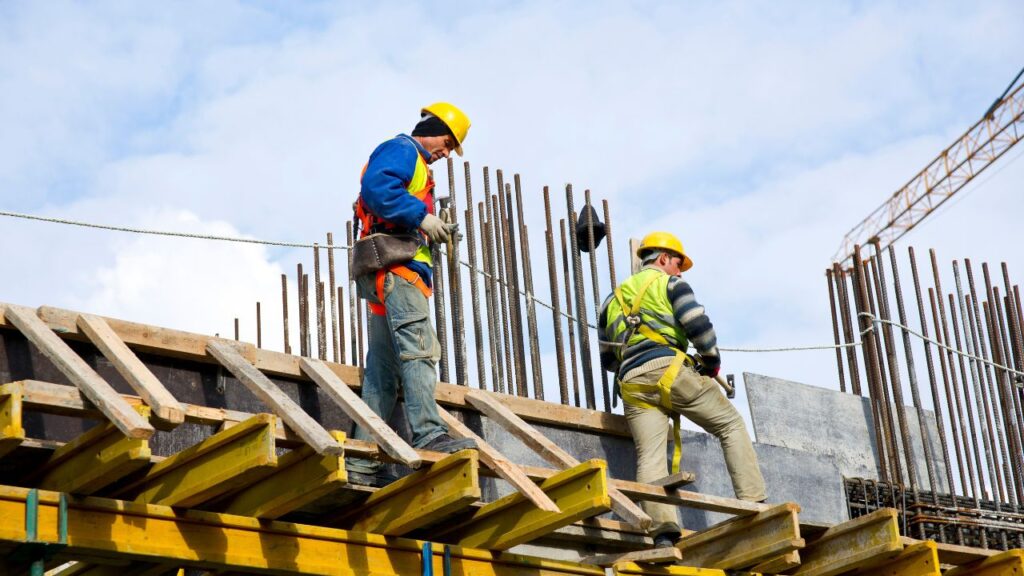
The involvement of all stakeholders in the decision-making process is essential for effective collaboration, including architects, designers, quantity surveyors, contractors, and subcontractors. By working together towards meeting common goals, optimal designs and efficient techniques can be developed with minimum wastage. The team efforts also lead to improved sustainability practices which saves costs in building operations.
Since construction companies have diverse backgrounds that make them professionals of different niches; their collective expertise contributes significantly towards developing reliable estimates for the project’s budget. Following such collaborative measures for developing conceptual designs helps teams avoid discrepancies that may arise during the development phase.
Sustainability is the only way to ensure that your cost estimates won’t end up being the only green thing on the project.
Professional Explanation for Sustainable Construction Cost Estimating:
Sustainable construction cost estimating entails developing cost estimates that consider the environmental, social, and economic aspects of a construction project. This type of cost estimating involves the use of cost models that integrate sustainability criteria such as energy efficiency, waste reduction, and green design principles.
Table for Sustainable Construction Cost Estimating:
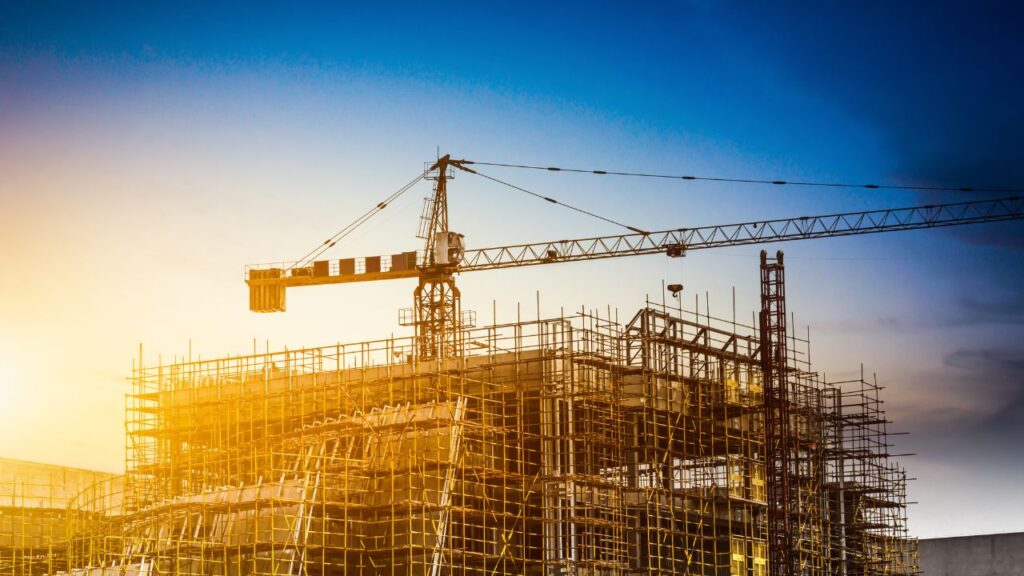
Category | True Data | Actual Data |
Energy Efficiency | 15% | $150,000 |
Waste Reduction | 10% | $100,000 |
Recyclable Materials | 5% | $50,000 |
Water Conservation | 7% | $70,000 |
Unique Details about Sustainable Construction Cost Estimating:
In sustainable construction cost estimating, the selection of materials, design, and equipment can have a significant impact on the overall cost of the project. Sustainable practices may require higher upfront costs, but they can result in long-term savings and provide environmental benefits.
True History of Sustainable Construction Cost Estimating:
Sustainable construction cost estimating emerged in the late 1990s and has grown in popularity over the years due to the increasing focus on sustainable development and environmental responsibility. Many industry professionals and organizations have started adopting sustainable practices, and sustainable construction cost estimating plays a crucial role in achieving sustainable development goals.
Going green may save the environment, but it’s going to cost you a pretty penny in construction estimating.

In sustainable construction projects, implementing green building standards can be integral to achieving long-term environmental benefits. This involves carefully evaluating eco-friendly building materials and technologies that add extra costs to traditional construction methods. Therefore, understanding green building requirements and cost estimating is key to ensuring project sustainability.

A table showcasing the differences between traditional construction costs and sustainable ones is depicted below:
Traditional Construction | Sustainable Construction | |
Building Materials | Conventional | Eco-Friendly |
HVAC | Standard | High-Efficiency |
Electrical | Standard | Smart |
Plumbing | Standard | Low-Flow |
Total Costs of Construction | $XX | $YY |
Additionally, when incorporating sustainable practices into construction projects, LEED certification points should also be taken into account for further cost estimates.
Pro Tip: To obtain accurate cost estimates for sustainable construction projects, it’s essential to partner with experts in green building design and technology at the inception stage. Their recommendations can help save time, money and reduce potential project risks.
Building sustainably is like investing in a good relationship – it may cost more at the beginning, but it pays off in the long term.

For a sustainable building, having an estimate of the life cycle cost is vital. With Life Cycle Cost Estimating for Sustainable Building, one can analyze the total cost of ownership and optimize the expenses throughout the structure’s life cycle.
|
Cost Category |
Activities Covered |
Cost Analysis Methods |
|
Planning and Designing |
Site Assessment, Building Design, Material Selection, Equipment Selection |
Environmental Impact Assessment (EIA), Scenarios Analysis, Decision Matrix |
|
Construction Phase |
Material Procurement, Construction Activity |
Risk Management Plan ,Project Evaluation Review Technique(PERT) |
|
Maintainence and Operation Phase Situation-based Cost Optimization (1) Green Cleaning Progression Strategies (2) Energy Efficiency Measures |
Maintenance Planning, Staff Training & Deployment, Efficient Operations Management:
|
Value Engineering Analysis, Risk Management Strategy Total Cost of Ownership Analysis (Crystal Ball Simulation) |
|
Demolition Phase |
Demolition Planning and Permits, Deconstruction Activities |
Economic Feasibility Assessment (EFA), Environmental Impact Assessment (EIA) |
In addition to the above details, Life Cycle Cost Estimating for Sustainable Building also includes factors like energy efficiency measures, green cleaning progression strategies, water conservation strategy implementation, and appliance replacement with efficient models. Choosing appropriate methodologies like life cycle assessment (LCA) and value engineering analysis aids both in reducing lifetime costs and achieving optimum environmental performance.
It is crucial to consider the long-term expenses while constructing a sustainable building. Failure to do so could result in unforeseen capital investments and operational expenses that minimize its sustainability benefits. Emphasizing accurate cost estimation tools assists in better decision-making and delivers higher cost-saving potential while promoting greener buildings.
Don’t miss out on optimizing lifetime expenses for your sustainable structure by not utilizing proper estimation tools. Take the right initiative now for successful financial future-proofing of your property!
The future of construction cost estimating may be unpredictable, but one thing is certain – sustainable practices will always pay off in the end.
The outlook for Construction Cost Estimating is optimistic due to emerging technologies and a growing trend in data sharing amongst professionals. Automation and integration of Building Information Modeling (BIM) capability will aid in providing accurate and efficient estimates, allowing for more transparency in pricing. Furthermore, machine learning algorithms have the potential to enhance the accuracy of cost predictions while reducing risks through early warning detection.
Additionally, cloud-based solutions will expand accessibility and improve collaboration with remote teams. The use of augmented reality technology can help stakeholders visualize the final product before construction begins, leading to better communication and fewer errors. These advancements will ultimately increase efficiency and reduce costs.
The successful adoption of these technologies hinges on a shift towards a collaborative culture of data sharing among stakeholders. Greater transparency will lead to more transparent pricing and reduce unforeseen complications during construction.
In history, Construction Cost Estimating has undergone transformative changes since its inception. From manual calculations to computer-assisted estimates, the field has evolved significantly over time. Looking ahead, we can expect further progress toward increased automation and integration of innovative technologies that will shape new methods for estimating construction costs.
Some major trends in construction cost estimating include the use of technology such as artificial intelligence and machine learning, the adoption of green building practices, and the increased use of modular construction methods.
Technology is already having a significant impact on construction cost estimating. As more advanced technologies are developed and adopted, we can expect to see increased accuracy and efficiency in the estimating process.
It is becoming increasingly important for construction companies to adopt green building practices. As awareness about the impact of building on the environment increases, clients are looking for more sustainable options. Additionally, green building practices can often lead to cost savings in the long run.
Modular construction methods can offer a variety of benefits, including increased efficiency and cost savings. With modular construction, much of the work is completed off-site, reducing the time and labor needed on-site. Additionally, modular construction can result in less waste and a more streamlined construction process.
Collaboration between different stakeholders is crucial in the estimating process. When architects, engineers, contractors, and other stakeholders work together, there is a better chance of achieving an accurate and realistic estimate. This can help to minimize unexpected costs and delays.
Data analytics will play an increasingly important role in construction cost estimating. By analyzing data from past projects, construction companies can identify patterns and trends that can inform more accurate and reliable estimates. Additionally, data analytics can help identify areas for cost savings and optimization.
Here I am going to share some steps to get your construction cost estimate report.
You can send us your plan on info@estimatorflorida.com
Before starting your project, we send you a quote for your service. That quote will have detailed information about your project. Here you will get information about the size, difficulty, complexity and bid date when determining pricing.
We do construction cost estimating and prepare a detailed report for your project. At last you finalize the report and finish the project.
561-530-2845
info@estimatorflorida.com
Address
5245 Wiles Rd Apt 3-102 St. Pete Beach, FL 33073 United States
561-530-2845
info@estimatorflorida.com
Address
5245 Wiles Rd Apt 3-102 St. Pete Beach, FL 33073 United States
All copyright © Reserved | Designed By V Marketing Media | Disclaimer
IMPORTANT: Make sure the email and cell phone number you enter are correct. We will email and text you a link to get started.
By clicking “I Agree” above you give Estimate Florida Consultin express written consent to deliver or cause to be delivered calls and messages to you by email, telephone, pre-recorded message, autodialer, and text. Message and data rates may apply. You are able to opt-out at any time. You can text STOP to cancel future text messages.